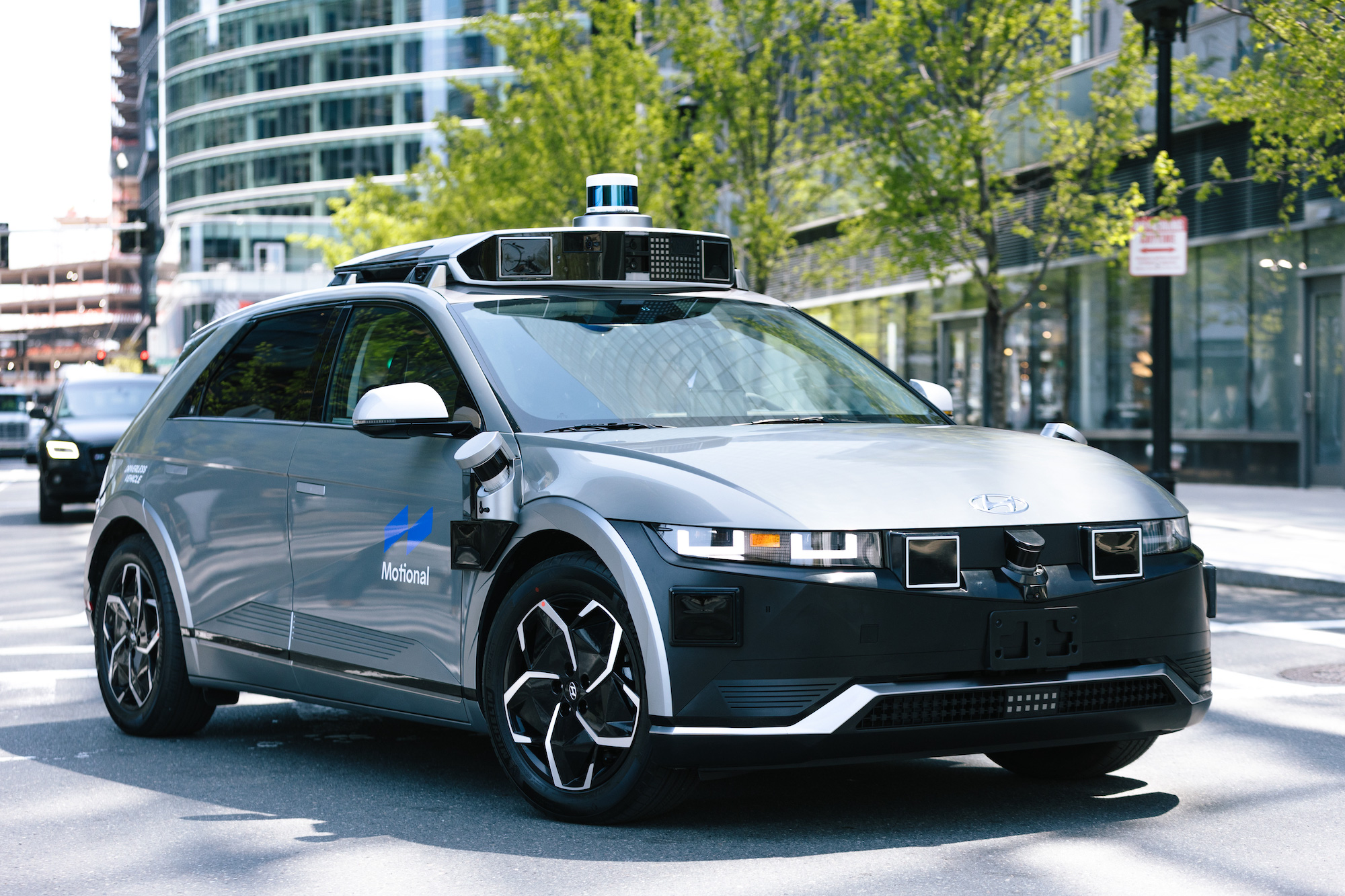Robotaxi Technology: The Key To Uber's Stock Market Recovery?

Table of Contents
The Potential of Autonomous Vehicles for Uber's Business Model
The integration of autonomous vehicles into Uber's operations promises a transformative shift in its business model, impacting profitability and scalability significantly.
Reduced Operational Costs
Eliminating the need for human drivers dramatically reduces operational expenditure, a crucial factor in Uber's profitability. Human drivers represent a major chunk of Uber's operational costs. This includes:
- Wages and benefits: A substantial portion of Uber's expenses goes towards driver compensation, including salaries, health insurance, and other benefits.
- Insurance premiums: Insurance costs for ride-sharing services are significant, and autonomous vehicles could potentially reduce these premiums due to statistically lower accident rates (once the technology matures).
- Training and recruitment costs: The ongoing costs associated with driver recruitment, background checks, and training would be drastically reduced.
Industry reports suggest that driver compensation accounts for up to 70% of Uber's operating costs in some markets. Furthermore, autonomous vehicles could lead to better fuel efficiency and reduced maintenance through optimized driving patterns.
Increased Efficiency and Scalability
Autonomous vehicles offer the potential for significantly improved operational efficiency. Optimized routing algorithms, eliminating driver downtime between rides, and 24/7 operation without driver shift changes contribute to:
- Increased vehicle utilization: Autonomous vehicles can operate continuously, maximizing their revenue-generating potential.
- Expanded service capacity: 24/7 operation allows Uber to meet peak demand more effectively and expand into underserved areas.
- Improved market share and profitability: The resulting increase in efficiency and capacity translates directly into increased market share and improved profitability.
- Expansion into new markets: Areas with high labor costs or driver shortages become more accessible and profitable with autonomous vehicles.
Enhanced Customer Experience
Beyond cost savings and increased efficiency, robotaxis promise a superior customer experience:
- Consistent service quality: Automated driving removes variability introduced by human drivers, leading to a more consistent and predictable experience.
- Improved safety: While safety remains a concern during the development phase, autonomous vehicles have the potential to significantly reduce accidents caused by human error.
- Personalized entertainment: In-vehicle entertainment systems and personalized comfort features can further enhance the rider experience.
- Improved accessibility: Autonomous vehicles can improve accessibility for people with disabilities who may find it challenging to use traditional ride-sharing services.
- Increased customer satisfaction: A better riding experience translates to higher customer satisfaction, positive reviews, and a strengthened brand image.
Challenges and Risks Associated with Robotaxi Implementation
While the potential benefits are considerable, the path to widespread robotaxi adoption is fraught with challenges.
Technological Hurdles
Developing truly reliable and safe autonomous driving technology remains a significant technological hurdle. Key challenges include:
- Software glitches and unexpected situations: Autonomous systems need to flawlessly handle unpredictable events like sudden lane changes, pedestrians crossing unexpectedly, or adverse weather conditions.
- Sensor limitations: Reliance on sensors for navigation and object detection is crucial; limitations in their range and accuracy need to be overcome.
- Comprehensive safety testing and validation: Rigorous testing and validation procedures are essential to ensure public safety before widespread deployment.
- Cybersecurity concerns: Protecting autonomous vehicles from hacking and cyberattacks is paramount.
Regulatory and Legal Framework
Navigating the regulatory landscape presents a considerable challenge.
- Varying regulations across jurisdictions: Laws and regulations governing autonomous vehicles differ significantly across regions, creating complexities for deployment.
- Permitting and licensing processes: Obtaining the necessary permits and licenses for testing and operating autonomous vehicles can be time-consuming and costly.
- Liability in case of accidents: Determining liability in the event of an accident involving an autonomous vehicle presents a complex legal challenge.
Public Perception and Acceptance
Public perception and acceptance of autonomous vehicles are critical for success. Addressing concerns is crucial:
- Safety concerns: Public apprehension about the safety of autonomous vehicles needs to be addressed through transparent communication and demonstrable safety records.
- Job displacement fears: Concerns about job displacement for human drivers need to be acknowledged and potentially mitigated through retraining programs and alternative employment opportunities.
- Building public trust: Building trust requires open communication, robust safety demonstrations, and transparent engagement with communities.
Investor Sentiment and Stock Market Implications
The successful implementation of robotaxi technology holds immense potential to sway investor sentiment.
Positive Impacts on Stock Price
Successful deployment of robotaxis could lead to:
- Increased investor confidence: Demonstrated cost reductions and increased efficiency can boost investor confidence and attract new investment.
- Higher profits and stronger stock valuation: Improved profitability directly translates to a higher stock valuation, potentially leading to a significant stock market recovery for Uber.
- Positive industry comparisons: Successful implementation could set a positive example for competitors and other companies using similar technology.
Risks to Stock Performance
However, several factors could negatively impact Uber's stock performance:
- Setbacks and delays in development: Significant setbacks or delays in the development of robotaxi technology could negatively impact investor confidence.
- High R&D costs: The substantial investment required for research and development poses a financial risk, and lack of clear ROI can worry investors.
- Public backlash or regulatory challenges: Negative public reaction or significant regulatory hurdles could significantly hinder progress and negatively affect the stock price.
Conclusion: The Future of Uber and the Robotaxi Revolution
Robotaxi technology presents both immense opportunities and significant challenges for Uber. While the potential for reduced costs, increased efficiency, and enhanced customer experience is undeniable, hurdles related to technology development, regulation, and public perception need to be addressed. The successful implementation of robotaxis holds the potential to be a key driver of Uber's stock market recovery, creating a more efficient, profitable, and customer-centric business model. However, the path forward is uncertain, and significant risks remain. Keep an eye on Uber's progress in robotaxi technology—it may well be the key to unlocking future growth and a significant stock market recovery. Stay informed about further developments in the field of autonomous vehicles and Uber's strategic investments in this transformative technology.

Featured Posts
-
 The Night Counting Crows Changed Their Snl Performance And Its Legacy
May 08, 2025
The Night Counting Crows Changed Their Snl Performance And Its Legacy
May 08, 2025 -
 Latest Arsenal News Collymores Criticism Of Artetas Tactics
May 08, 2025
Latest Arsenal News Collymores Criticism Of Artetas Tactics
May 08, 2025 -
 Spk Nin Aciklamasiyla Kripto Piyasalarinda Yeni Bir Cag
May 08, 2025
Spk Nin Aciklamasiyla Kripto Piyasalarinda Yeni Bir Cag
May 08, 2025 -
 Dissecting The Thunder And Bulls Offseason Trade A Deeper Dive
May 08, 2025
Dissecting The Thunder And Bulls Offseason Trade A Deeper Dive
May 08, 2025 -
 Freeway Series Mookie Betts Absence Due To Ongoing Illness
May 08, 2025
Freeway Series Mookie Betts Absence Due To Ongoing Illness
May 08, 2025
Latest Posts
-
 Understanding The Bitcoin Rebound A Guide For Investors
May 09, 2025
Understanding The Bitcoin Rebound A Guide For Investors
May 09, 2025 -
 Recent Bitcoin Rebound Signs Of A Market Recovery
May 09, 2025
Recent Bitcoin Rebound Signs Of A Market Recovery
May 09, 2025 -
 Bitcoin Madenciliginin Gelecegi Son Mu
May 09, 2025
Bitcoin Madenciliginin Gelecegi Son Mu
May 09, 2025 -
 Bitcoin Price Surge Is This A Long Term Rebound
May 09, 2025
Bitcoin Price Surge Is This A Long Term Rebound
May 09, 2025 -
 Bitcoin Madenciliginde Yeni Bir Doenem Son Mu Baslangic Mi
May 09, 2025
Bitcoin Madenciliginde Yeni Bir Doenem Son Mu Baslangic Mi
May 09, 2025
